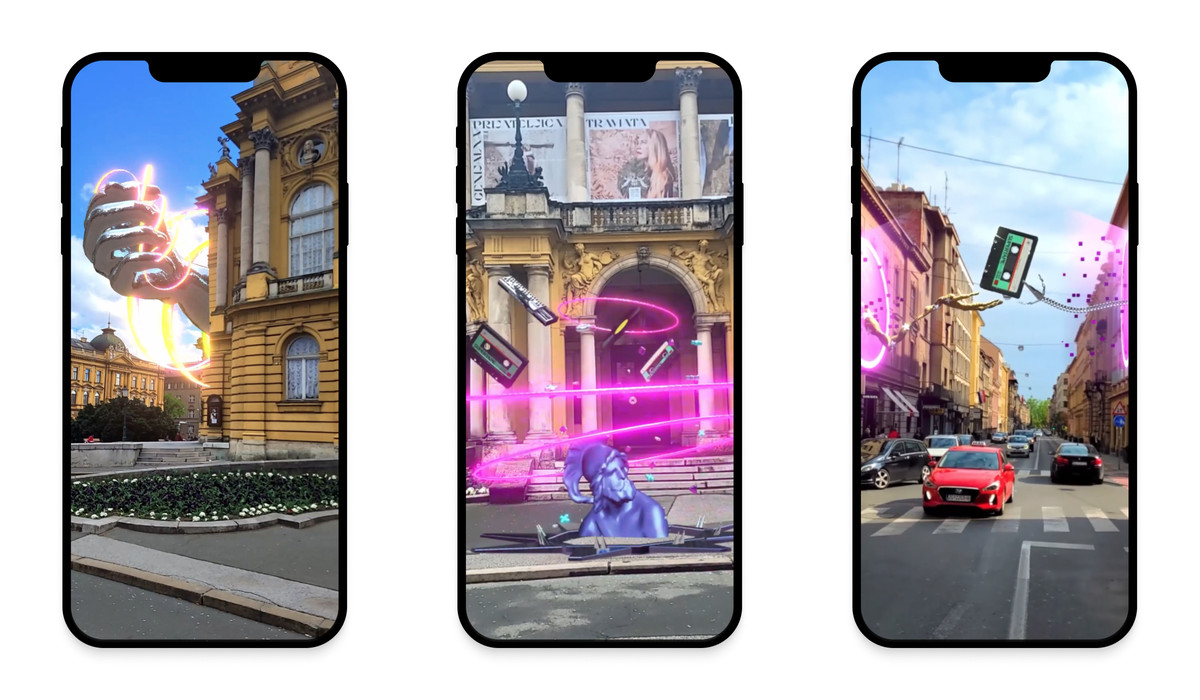Niantic made a name for itself in the mobile gaming industry through the enduring success of Pokémon Go. Now the company is hoping to become something else: a platform for other developers to build location-aware AR apps on top of.
This plan has been in the works since at least 2018, but it’s taking a big leap forward this week with the long-awaited release of Niantic’s location mapping software for AR, which it calls the Visual Positioning System, or VPS in a nod to GPS. The technology makes it so that AR experiences can be grounded to a physical location, like the front of a building or a park monument, rather than just floating aimlessly through a phone’s camera view.
Developers can now use VPS as the tentpole feature of Niantic’s broader Lightship SDK, which also lets multiple devices access a shared AR experience — like a 3D multiplayer game — at the same time. VPS will be free during an initial public beta period and then switch later this year to a tired billing system that’s based on an app’s number of monthly users, according to Niantic spokesman Jonny Thaw.
In addition to VPS, Niantic is this week also releasing Campfire, a location-based social network that integrates with its games and future apps that use Lightship. Campfire taps your Niantic account’s list of friends to show their locations on a map if they opt in, along with nearby in-game experiences. You can organize and RSVP to real-life meetups for these experiences, such as a Pokémon raid, and chat with other players in a group. The goal is for Campfire to not only make Niantic’s games more social but provide a way for other developers to have their Lightship-powered apps be discovered by the company’s millions of users.
To power VPS, Niantic has crowdsourced millions of phone camera scans of real-world locations by both Ingress and Pokémon Go players. It claims to have 20,000 VPS-activated locations around the world, along with centimeter-level precise maps for large parts of San Francisco, London, Tokyo, Los Angeles, New York City, and Seattle.

Niantic
With this location layer, Niantic hopes to offer a critical piece of infrastructure for AR apps, whether they’re on phones or, eventually, smart glasses. The company charges developers with large user bases to access the server-side aspects of Lightship, including VPS and multiplayer functionality. That gives Niantic a potential revenue stream beyond the significant amount of money it already makes from Pokémon Go, though CEO John Hanke doesn’t expect Lightship to be a meaningful revenue driver in the near term.
A couple of months ago, Niantic bought 8th Wall, a startup that sells AR development tools for the web rather than for native apps on iOS or Android. Niantic plans to keep 8th Wall running and integrate Lightship, letting browser-based AR experiences access its mapping tech. While bigger companies like Meta and Snap prioritize AR developer tools for their own platforms, Hanke sees an opportunity to offer a toolkit that works anywhere through a web browser.
“Our goal is to create tools for people that want to build apps they can run cross-platform and that they own and control,” he tells The Verge. “And they’re not just features on somebody else’s service, but they’re actually applications that can exist on their own and that whole companies can be built around.”

